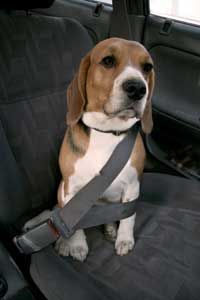People care a lot about their pets. Some refer to them as members of the family, designate rooms in their houses for them, shower them with gifts on their birthdays and hold funerals for them when they pass along to that great animal paradise in the sky. If you aren't convinced of the widespread pet love, look at the numbers: In 2008, Americans spent $43.4 billion on pet-related products [source: American Pet Products Manufacturers Association].
One of the newest pet niches that's grown in recent years is pet travel. Hotels, resorts and spas designed specifically for pets have sprung up. For owners who wish to bring their cherished pets along for the journey, countless pet travel accessories fit the need of any traveling feline or Fido. But taking your pet on vacation with you requires preparation. Just like you have to plan ahead and pack clothes and necessities appropriate for the weather, location and duration of your trip, you must do the same for your pet.
Advertisement
In the pretravel rush, basic things like your toothbrush or extra socks can slip your mind easily. Writing out a list of items to bring can solve that problem. Since your dog or cat can't hold a pen or pack a bag, it's up to you to remember all the pet travel essentials. To help you get started, here are 10 of the most common pet travel items to consider carrying along.













